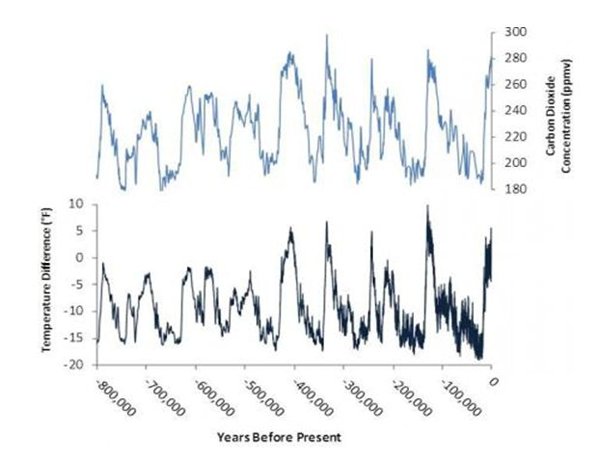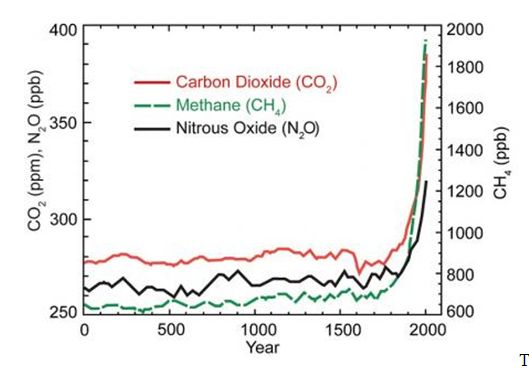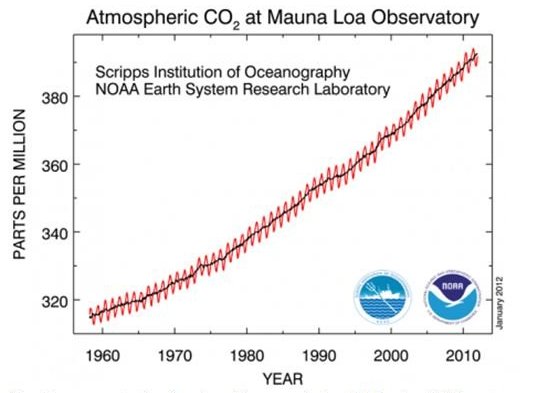EPA: Climate change explained in graphics
Note: See more about what causes climate change here.
Earth's changing atmosphere

Greenhouse gas spike:

Atmospheric Carbon Dioxide

Atmospheric carbon dioxide concentration has risen from pre-industrial levels of 280 parts per million by volume (ppmv) to over 401 ppmv in 2016. Since 1959 alone (shown here), concentrations have risen by more than 85 ppmv. The yearly rise and fall in the chart reflects the growth and decay or northern hemisphere vegetation. Source: NOAA.

